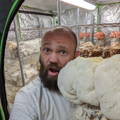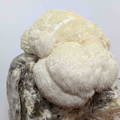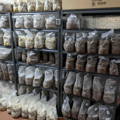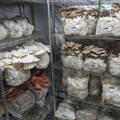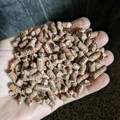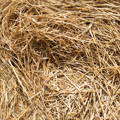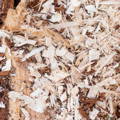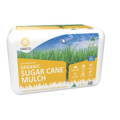One of the easiest ways to grow mushrooms “from scratch” is using a 20 liter bucket. This technique is popular for home growers since the materials can be reused and the size/stackability is agreeable. Plus you may already have one laying around.
All you need is the bucket and a drill with a 6mm drill bit. A food-grade bucket is recommended to ensure it hasn’t contained any potentially harmful compounds. Make 6 evenly spaced holes along the bottom, middle, and top of the bucket. Voila, your bucket is ready for growing mushrooms!
It is recommended to cover the holes with micropore tape. This can easily be found in a pharmacy and acts as an easy filter. While some growers have success without this, it can help reduce risks of contamination. (Masking tape or even inserting your bucket into another bucket will work also).


